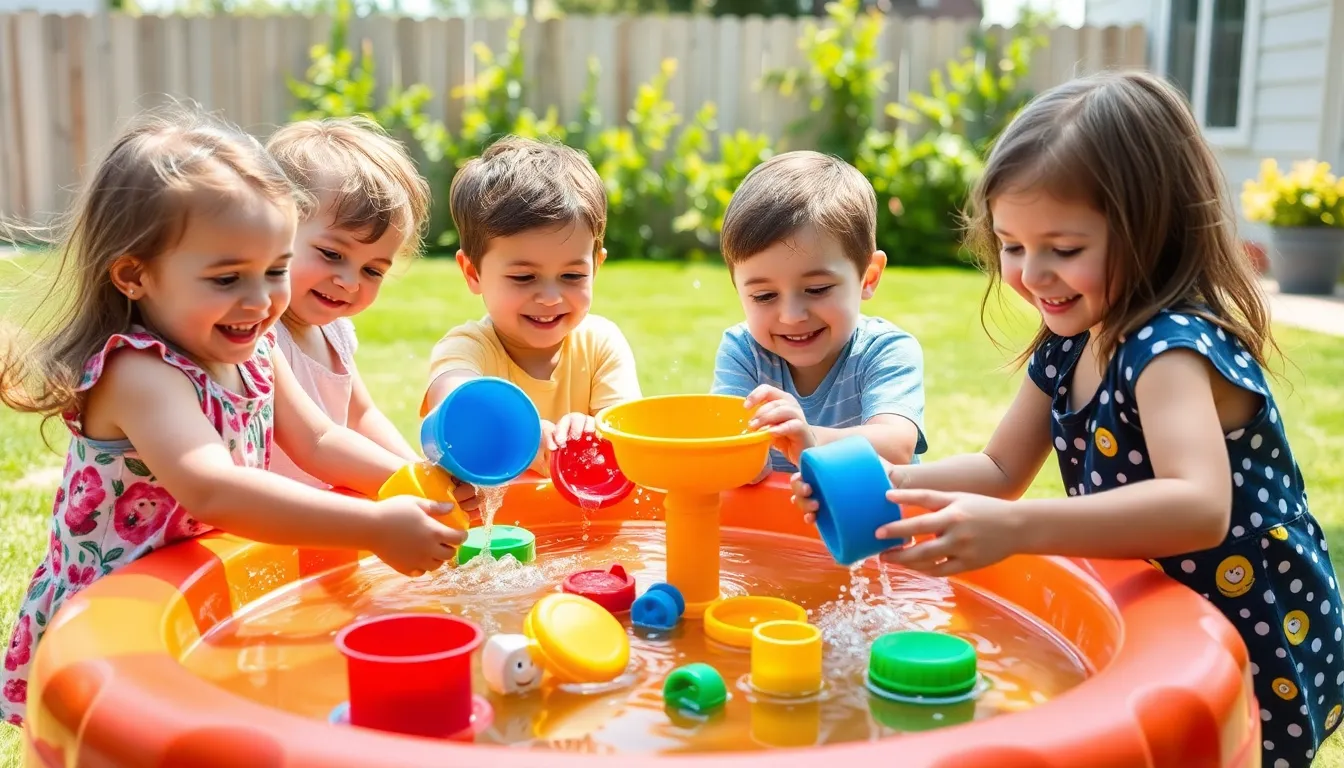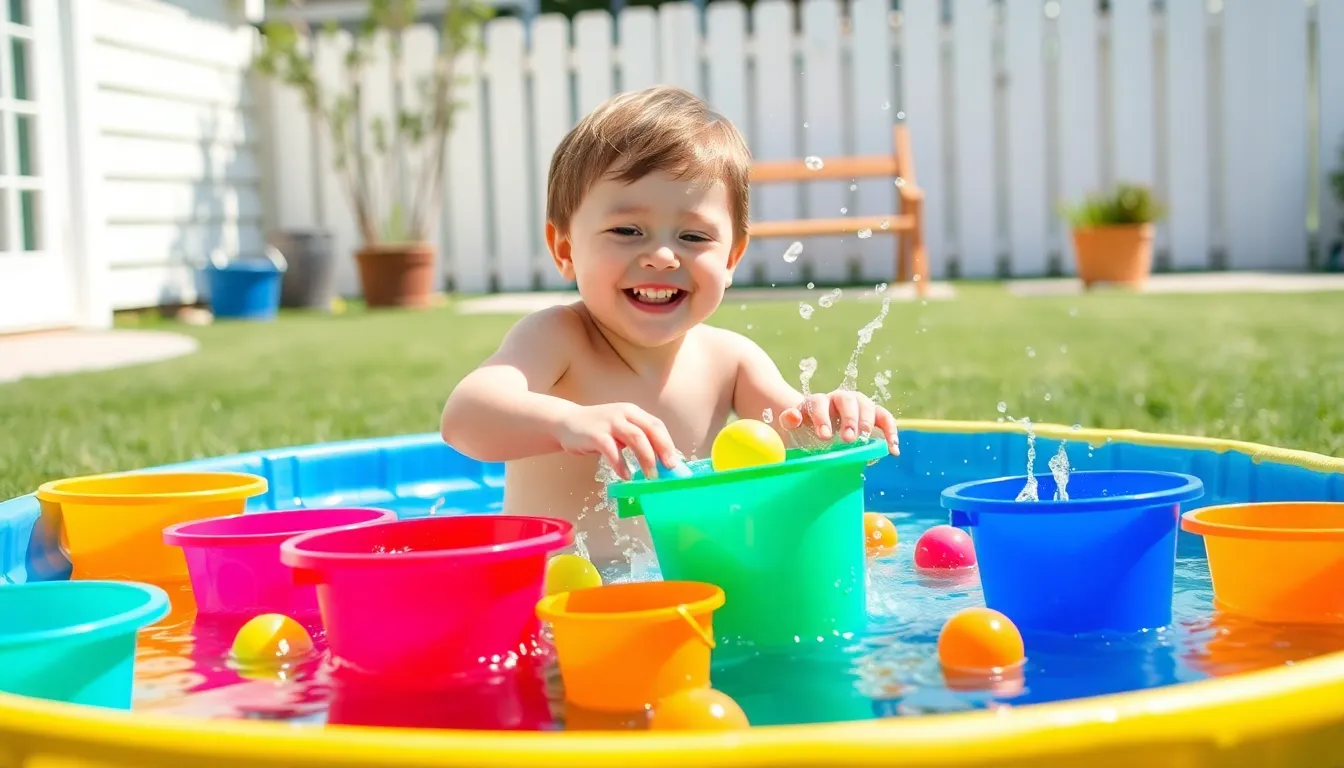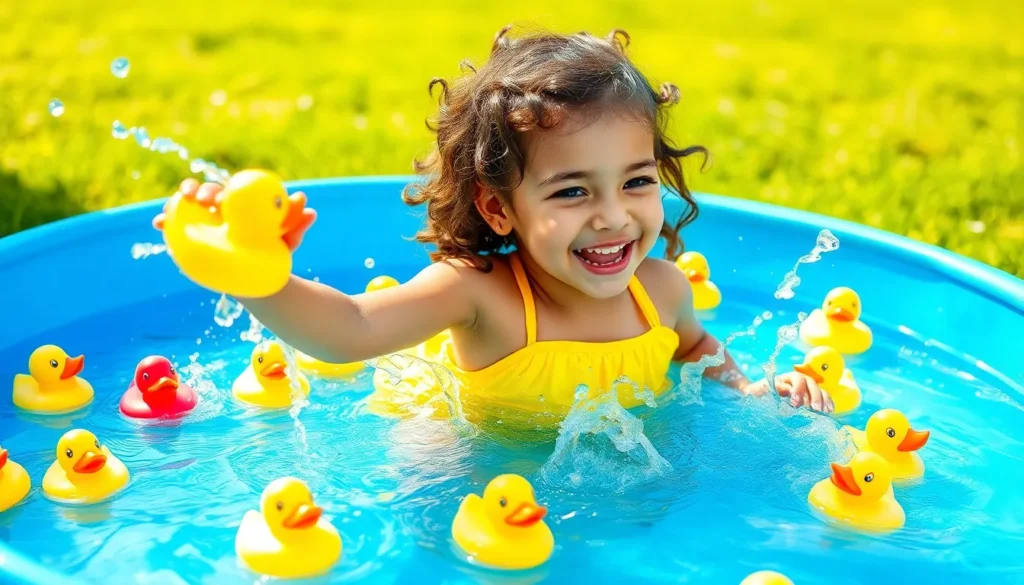Table of Contents
ToggleSplashing around in water isn’t just for fish and ducks; it’s a world of fun for preschoolers too! Imagine the giggles and squeals as little ones dive into engaging water activities that spark their creativity and boost their motor skills. From tiny hands pouring and scooping to the joy of floating colorful toys, water play offers endless opportunities for learning while having a blast.
Importance of Water Activities for Preschoolers
Water activities play a crucial role in early childhood development. They provide enjoyable, hands-on experiences that promote various skills.
Benefits for Physical Development
Water play enhances physical skills in preschoolers. Engaging in tasks like pouring and scooping builds fine motor skills. Kids strengthen hand-eye coordination as they maneuver colorful toys in the water. Balancing while playing helps improve core strength. Activities also promote gross motor development through splashing and moving around. Preschoolers experience sensory stimulation, which aids in physical growth and coordination. Ultimately, these activities offer children fun-filled opportunities to improve their physical capabilities.
Benefits for Cognitive Development
Cognitive skills thrive through water activities for young children. Problem-solving emerges as they figure out how to float objects or create water patterns. Encouraging questioning leads to curiosity about water’s properties. Experimenting with different types of water play fosters critical thinking. Children make connections with scientific principles such as buoyancy and volume during play. Collaboration with peers enhances social skills and promotes communication. With varied experiences, preschoolers expand their cognitive abilities while enjoying the learning process.
Fun Water Activities for Preschoolers


Water activities captivate preschoolers, blending fun with learning. Engaging young children in interactive water play nurtures their development.
Splashtastic Games
Splashing in shallow water engages preschoolers while enhancing gross motor skills. Tossing soft balls into buckets encourages hand-eye coordination. Floating and sinking games introduce concepts like buoyancy, providing a foundation for scientific exploration. Creating mini water races with toy boats stimulates friendly competition and teamwork. Children can also use small cups to pour water from one container to another, further refining their fine motor skills. Each of these activities fosters an environment of laughter, learning, and discovery.
Creative Water Play Ideas
Crafting a DIY water wall offers endless exploration opportunities for preschoolers. Hang various containers at different heights to invite pouring, splashing, and dripping. Using colored water creates a vivid sensory experience that intrigues young minds. Another engaging idea involves making ice cubes with small toys inside; as the ice melts, children discover hidden treasures while learning about temperature changes. Sensory bins filled with water, sand, and natural materials promote imaginative play. Incorporating different textures adds variety to water play, keeping activities fresh and exciting.
Safety Tips for Water Activities
Prioritizing safety during water activities ensures a secure environment for preschoolers. Understanding the risks associated with water play helps caregivers implement necessary precautions.
Supervision Guidelines
Supervision remains essential whenever preschoolers engage in water play. Keep a watchful eye on children, regardless of their swimming abilities. Designate a responsible adult to monitor activities closely, offering assistance if required. Maintain proximity to the water, ensuring caregivers can quickly intervene in emergencies. Encourage caregivers to eliminate distractions during water play, enabling full attention on the children and their safety.
Choosing the Right Area for Play
Selecting a safe area for water activities significantly impacts children’s enjoyment and well-being. Identify locations with shallow water, such as wading pools or designated splash pads, reducing the risk of drowning. Ensure the area is free from hazards, including sharp objects or slippery surfaces. Choose environments with clear visibility, allowing caregivers to monitor all children. Opt for locations that offer additional safety features, such as lifeguards or safety equipment, further securing the play space.
Incorporating Learning into Water Activities
Engaging in water activities fosters children’s learning while they play. Young learners can explore science concepts through simple experiments that make learning fun.
Science Experiments with Water
Preschoolers benefit from hands-on science experiments involving water. Floating and sinking activities teach them about buoyancy, while mixing water with different materials introduces concepts like density. Using household items like food coloring allows children to observe how colors blend and create new shades. Adding objects with varying weights, such as rocks and leaves, demonstrates how size and material impact buoyancy. Simple tools like measuring cups promote early math skills by encouraging children to measure and compare volumes. Each experiment sparks curiosity, fueling a desire to explore the world around them.
Artistic Expression Through Water Play
Water play also serves as a medium for artistic expression. Children can create delightful art using water and various materials. For instance, watercolor painting lets them experiment with colors and techniques while enjoying splashes. Ice painting, where colored ice cubes are used on paper, combines creativity with sensory experiences. Children can also use water pens on special boards, allowing them to practice writing and drawing in a fun way. Each artistic endeavor encourages self-expression, enhancing creativity while promoting fine motor skills through manipulation of brushes and tools.
Water activities offer preschoolers a fantastic opportunity to learn and grow while having fun. Through engaging in these playful experiences, children develop essential motor skills and enhance their creativity. The benefits extend beyond physical development as they explore scientific concepts and improve their cognitive abilities.
Safety remains a top priority during these activities, ensuring that children can enjoy their time in the water without risks. By fostering a supportive and secure environment, caregivers can encourage children to explore and discover. Embracing water play not only enriches a child’s early years but also lays the foundation for lifelong learning and curiosity.







